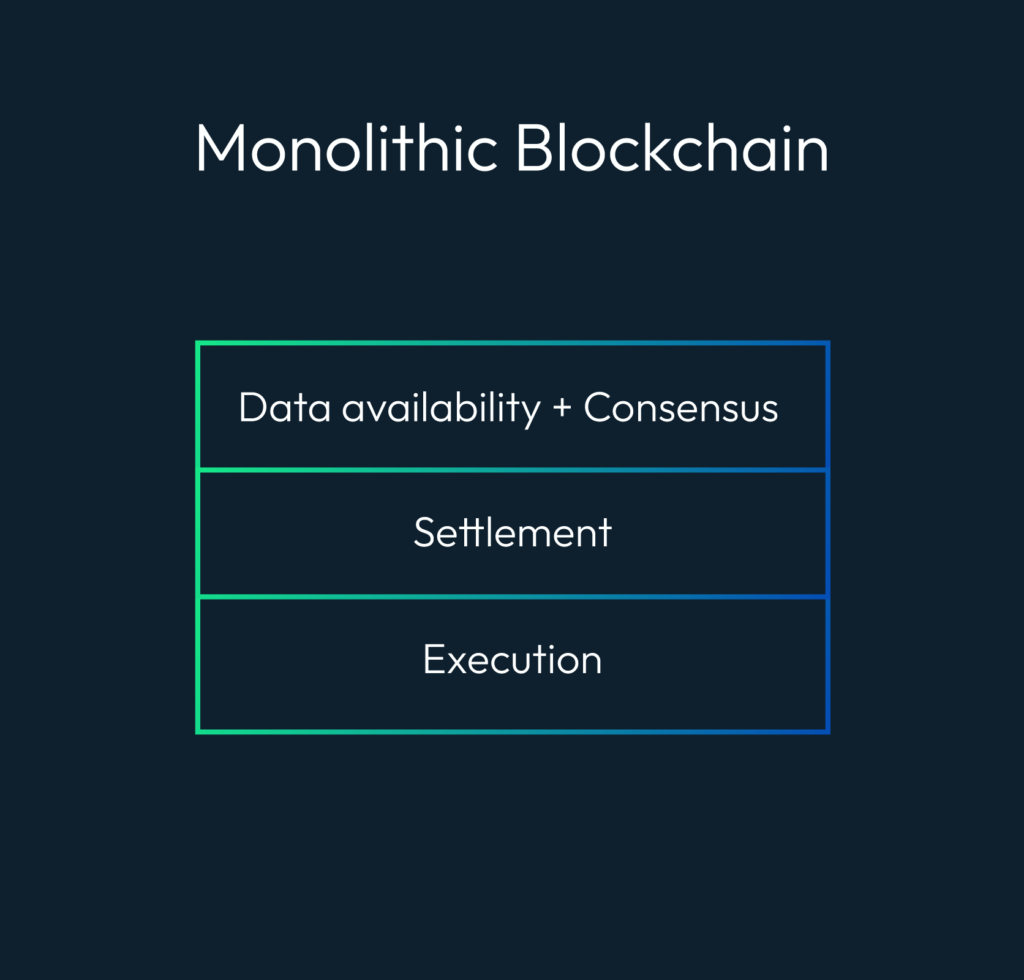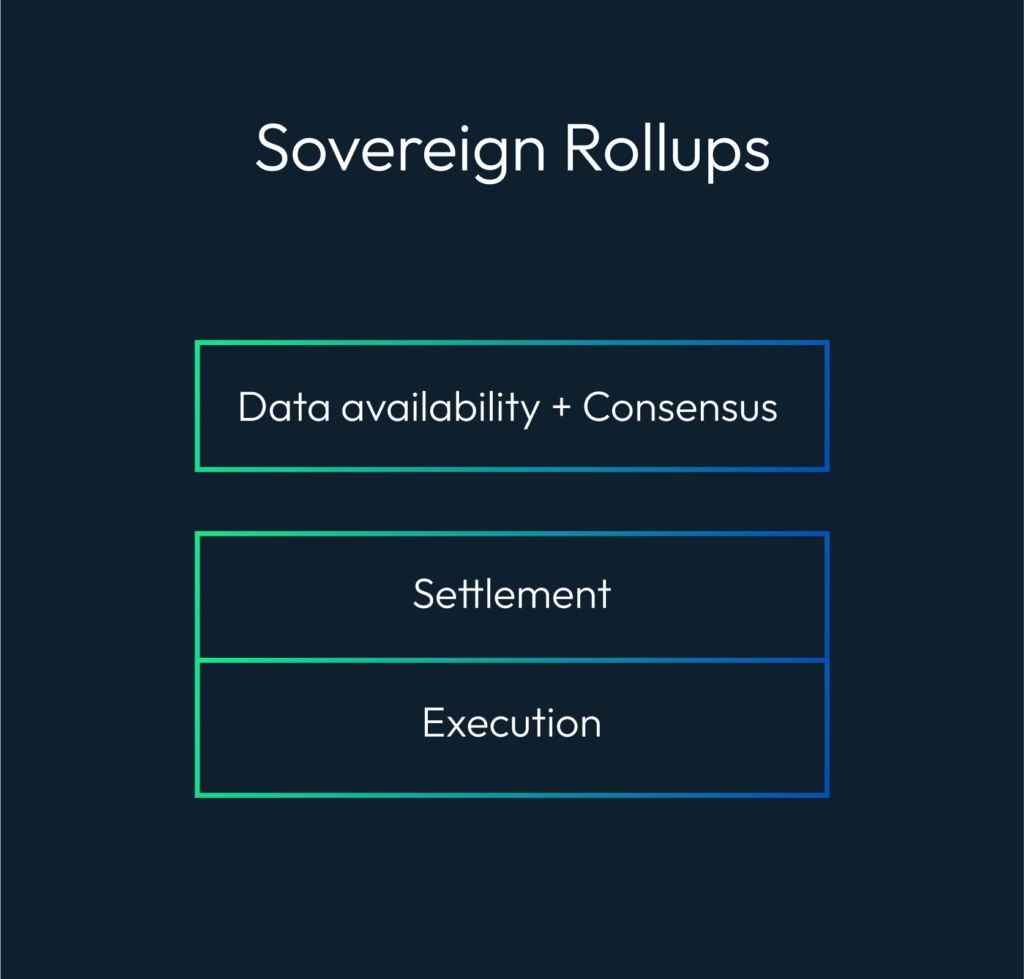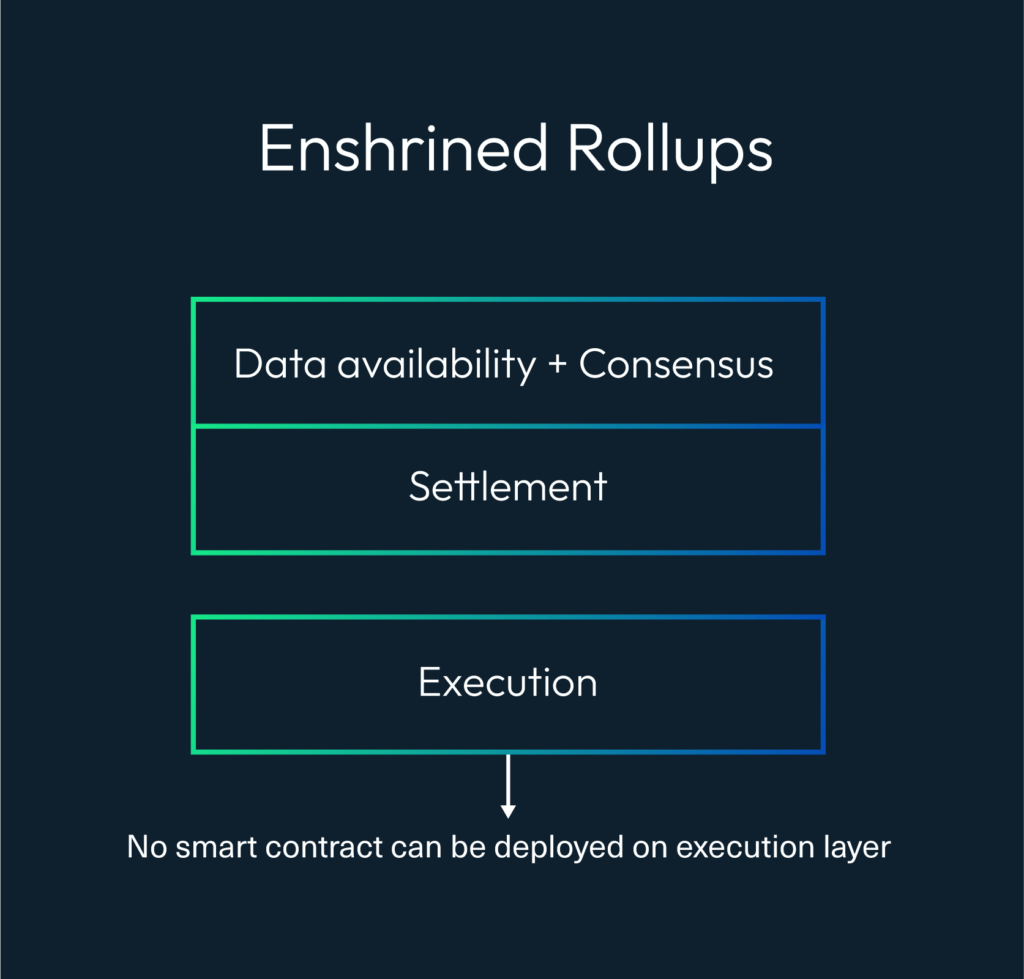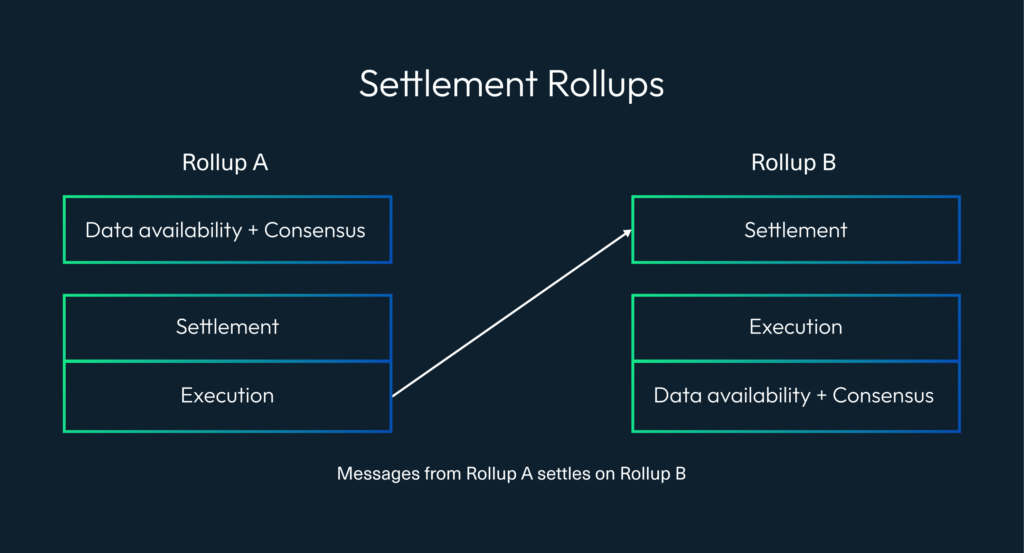Scalability, the problem that blockchain ecosystem has been trying to solve since the advent of blockchains. While many solutions were proposed at different periods of time, some of them were feasible; some were not. But whatever solutions came through, things did provide a better outlook on the possible solutions. Now we have many ways to scale the ecosystem, such as the multichain approach or better yet, rollups. You can have a look at Optimism bedrock, a rollup. In this article, we will explore the different types of rollups. For which we will first look at some concepts in the upcoming section. Blockchains comprise of many functionalities; the most prominent ones being Data availability, a.k.a. DA, settlement, execution, and consensus. Imagine a transaction on a rollup, we are just going to go through which layer the transactions goes to instead of how nodes deal with that. The consensus layer goes side by side with DA because wherever the data lies, is gonna have consensus for the data. So, we are not going to separate consensus from DA, as that introduces unwanted complexities to the concept. To summarize, we have data availability, settlement, execution, and consensus in any blockchain. Mustafa Al-Bassam defined these in one of his talks. Let’s have a look at the definitions individually. Consensus Layer: All the transactions taking place are arbitrary messages. The consensus layer provides order to arbitrary messages. Data Availability Layer: The Data availability layer ensures the messages are published and allows network participants to access all those arbitrary ordered messages. Execution Layer: We have the DA layer data, but how do we interpret that data? How to know what account holds what balance etc.? This is the work of the execution layer. This is where all the transactions are computed to give out the state. Settlement Layer: The settlement layer bridges other execution chains together. Rollups are essentially execution chains, so if we have multiple rollups, the settlement layer provides a layer where all they can post their headers and proofs so that they can communicate with each other. They can exchange assets. Now let's consider these 4 components as legos. When we have all 4 of the legos in one layer, then get a monolithic blockchain, which is a pretty straightforward thing. For example, we have Bitcoin, a monolithic blockchain, or Solana. We also have Ethereum, which too started as a monolithic blockchain. However, Ethereum is now transitioning towards a more modular approach known as the rollup-centric roadmap. However, monolithic blockchains have a problem is that they are hard to scale. Now, another way to attach the legos is separating execution from the rest of the components, which results in a rollup. But what is a rollup? Basically, rollups are blockchains because it has all the functionalities a blockchain has. But, they post their blocks to another blockchain and inherit the safety, security, and consensus of that other blockchain. They may use this other blockchain for DA too, or it can use some other way to provide data availability. Separating DA decreases the validation cost of the blockchain. Think about Optimism or ZKSync, which posts the blocks, proofs, and call data to Ethereum. Hence, adding the security provided by Ethereum to the rollup. The main purpose of rollups is to scale the blockchain. Now, we will look at the types of rollups formed with different alignments of components i.e., Sovereign, enshrined, smart contract, and settlement rollups, in the next section. Sovereign rollups have execution and settlement in one layer. Celestia gave name to the idea of sovereign rollups. However, the Cosmos ecosystem has cosmos zones which are exactly what sovereign rollups are defined as. “Rollups which are responsible to for settlement of their own native assets”, which makes the chain sovereign, hence the name Sovereign rollups or sovereign chains. The DA is part of the base layer in sovereign rollups, which ensures the transaction ordering and not validity, because chains such as Celestia are getting used to dump data only, making it available in case the state needs to be fetched or recreated. The settlement is taken care of within the rollups. The full and light nodes download the blocks from their P2P network and check for DA. Fraud or validity proofs are sent around in the P2P network because settlement is getting dealt with in the same layer. Sovereign rollups define their own fork choice rules because it is essentially like a blockchain without DA. Before we dive into enshrined rollups, what is the word “enshrined”? It means ensuring that something is preserved and protected. In enshrined rollups, the implementation is built into the protocol. They don’t have any external assumptions apart from the base layer assumptions. Tezos blockchain has “Transaction optimistic rollups”. As the name suggests, it is used only for exchanging assets and not used for smart contracts. This means no smart contract bugs! Smart contract rollups are what we see on Ethereum, i.e., Rollups with settlement and DA on the base layer and execution on a separate layer but in smart contract rollups, Smart contracts can be deployed on the execution layer. Optimism is a smart contract rollup. Different protocols deploy their smart contracts on top of optimism to get the execution functionalities of the rollup such as less gas cost. Settlement rollups resemble sovereign rollups in that the settlement and execution layer exists together on a layer, and some base layer is used for DA. So how does this differ? Basically, on settlement rollups, other rollups can also get settled. If you imagine a rollup with its own execution and settlement but other rollups also have their settlement on top of this rollup, it will cause them to compete for space, which will be very messy. The whole purpose will be lost, leading to clogging and even higher transaction costs. Then you’d probably have better options that you can use instead. And so, settlement rollups need not be sovereign to have better architectural construction. You can also imagine settlement rollups as bridges between multiple rollups. Components in a Blockchain Architecture
Joining the Legos!


Sovereign Rollups

Enshrined Rollups

Smart Contract Rollups

Settlement Rollups



